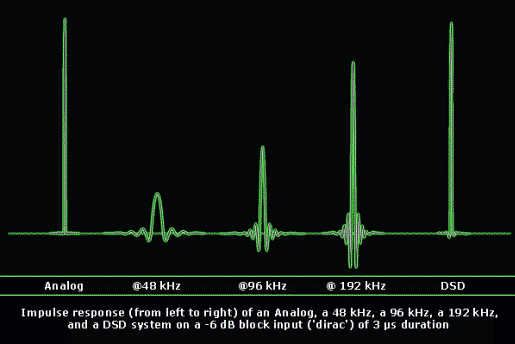HDMI does not support DSD bitstreaming, and I think there's little chance of that changing soon.
I think it does. A study of the HDMI specification 1.3 or later shows that HDMI can transport DSD or DST data This is an optional not required feature. If it is implemented then it has to support at a minimum DSD 64fs but the HDMI standard allows up to DSD 512fs rates over HDMI and up to 8 channels. In terms of the HDMI Handshake the device can advise/report DSD support, DST support and rate support (returned as the base frequency of 44.1 and the fs multiplier) in the SHort Audio Descriptor field of the EDID
"A Source may transmit One Bit Audio at an fS (1/64th of the bit rate) of 32kHz, 44.1kHz, 48kHz,88.2kHz, 96kHz, 176.4kHz or 192kHz. Any Source capable of supporting One Bit Audio should support an fS of 44.1kHz, corresponding to a bit rate of 2.8224MHz.Transmitted One Bit Audio shall have an audio sample rate within ±1000 ppm of the targeted sample rate. A Sink may accept One Bit Audio at an fS (1/64th of the bit rate) of 32kHz, 44.1kHz, 48kHz, 88.2kHz, 96kHz, 176.4kHz or 192kHz. Any Sink capable of supporting One Bit Audio shallsupport an fS of 44.1kHz, corresponding to a bit rate of 2.8224MHz."
Just an observation. Your reliance on users to supply ISO files suggests that you don't have an extensive library of DSD data at your disposal and a restricted experience with DSD (not Analog tape->DSD or PCM->DSD, DXD->DSD). Native DSD (record->mix->master) recordings especially those which are stereo/simply miked, unmixed, live to DSD recorder through a good Analog to DSD converter like the Grimm AD-1 converter are in a different class than similarly sourced analog captured by PCM. However these are an audiophile niche and popular music listeners need not be concerned on missing out.
Pulse width modulation is not architecturally the same thing as pulse code modulation when it comes to capturing analog. Delta-sigma DACS and DSP type operations in software may effectively.practically obliterate differences between DSD and PCM in the digital domain but the ability of DSD to initially represent/capture the analog signal is superior to PCM, in the area of impulse response especially and micro dynamics like attack and decay. Multichannel listening is a different kettle of fish however. Room correction (time and frequency adjustements), for now, are best done in high bit rate PCM until such time as CPU/DSP power allows SDM/DSD equivalents. DSD's benefits are further multiplied once you start to raise the sample rate. As others have suggested, on revealing systems in competent rooms DSD transcoded to PCM is a discernible sonic degradation compared to DSD left untouched on its way back to analog. This aural distinction is clearer with DSD originated sources as above but less so where the recorded source was PCM which has undergone PCM->DSD->PCM manipulations

